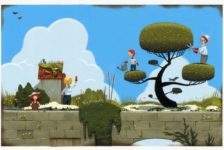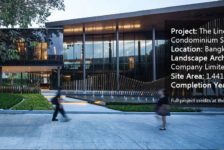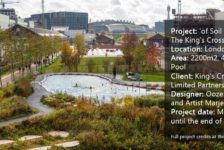Top graduate Joe Clancy shares his top book recommendations for your second year of landscape architecture. Continuing on from our first article, here are 10 books that helped me through my second year of Landscape Architecture. Prices quoted are from Amazon. However, shop around, as they aren’t cheap. Of course, check your University’s library first. Keep an eye out for my follow up articles on book lists for 3rd and 4th year. Note: Everyone will have their favorites and this list is only a small portion of the material out there. There are “must reads” and “classics” and so on, but I feel the choices below are, currently, the most relevant and current. 10. Design With Nature (Ian L. McHarg) 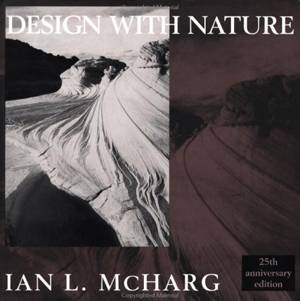 In the twenty-five years since it first took the academic world by storm, Design With Nature has done much to redefine the fields of landscape architecture, urban and regional planning, and ecological design. It has also left a permanent mark on the ongoing discussion of mankind’s place in nature and nature’s place in mankind within the physical sciences and humanities. Described by one enthusiastic reviewer as a “user’s manual for our world,” Design With Nature offers a practical blueprint for a new, healthier relationship between the built environment and nature. Get it Here! 9. Death and Life of Great American Cities (Jane Jacobs) A direct and fundamentally optimistic indictment of the short-sightedness and intellectual arrogance that has characterized much of urban planning in this century, “The Death and Life of Great American Cities” has, since its first publication in 1961, become the standard against which all endeavors in that field are measured. In prose of outstanding immediacy, Jane Jacobs writes about what makes streets safe or unsafe; about what constitutes a neighborhood, and what function it serves within the larger organism of the city; about why some neighborhoods remain impoverished while others regenerate themselves. Get it Here! 8. Life Between Buildings (Jan Gehl)
In the twenty-five years since it first took the academic world by storm, Design With Nature has done much to redefine the fields of landscape architecture, urban and regional planning, and ecological design. It has also left a permanent mark on the ongoing discussion of mankind’s place in nature and nature’s place in mankind within the physical sciences and humanities. Described by one enthusiastic reviewer as a “user’s manual for our world,” Design With Nature offers a practical blueprint for a new, healthier relationship between the built environment and nature. Get it Here! 9. Death and Life of Great American Cities (Jane Jacobs) A direct and fundamentally optimistic indictment of the short-sightedness and intellectual arrogance that has characterized much of urban planning in this century, “The Death and Life of Great American Cities” has, since its first publication in 1961, become the standard against which all endeavors in that field are measured. In prose of outstanding immediacy, Jane Jacobs writes about what makes streets safe or unsafe; about what constitutes a neighborhood, and what function it serves within the larger organism of the city; about why some neighborhoods remain impoverished while others regenerate themselves. Get it Here! 8. Life Between Buildings (Jan Gehl)
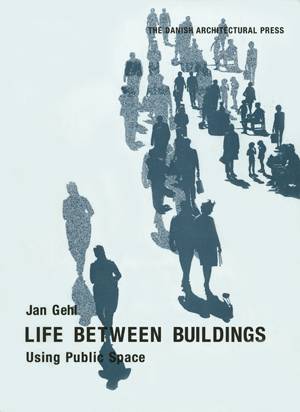
Life Between Buildings
The intensity in which fine public spaces are used at this point in time, as well as the greatly increased general interest in the quality of cities and their public spaces emphasises this point. The character of life between buildings changes with changes in any given social context, but the essential principles and quality criteria to be employed when working with life between buildings has proven to be remarkably constant.
Get it Here! 7. Constructing Landscape (Astrid Zimmermann) The one-stop handbook on landscape architecture in a revised edition “Constructing Landscape” is a systematic introduction to technical and constructional open space planning, with all the relevant topics, from the most common materials and surfaces to the construction of open space elements and the use of plants. For landscape architects and architects it is an indispensable guide to correct and professional execution planning as well as to preparing solid and well-thought-out requests for proposal. “Constructing Landscape” is divided into two sections, Materials and Surfaces, and Building Construction and Building Elements.
Get it Here! 6. Basics Landscape Architecture: Urban Design (Tim Waterman, Ed Wall) 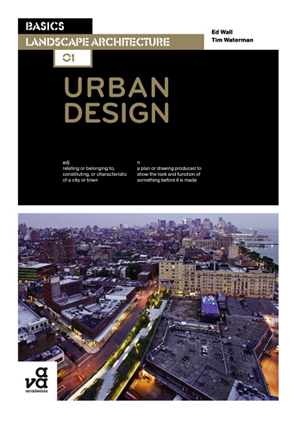
Basics Landscape Architecture: Urban Design
Basics Landscape Architecture: Urban Design provides an overview of urban design from a landscape architecture perspective. Urban design is an interdisciplinary practice that is concerned with defining the form of human settlements. Landscape architecture plays an important role in this process. This title seeks to define and describe this role, highlighting the unique perspective that landscape architects bring to urban design. It provides a brief history and definition of urban design and the roles of the various professions involved. It looks at the elements of urban form and the importance of contextual details, from the scale of the city and its region to the importance of materials.
Get it Here! 5. Basics Landscape Architecture: Ecological Design (Nancy Rottle, Ken Yocom) “Basics Landscape Architecture 02: Ecological Design” provides an overview of ecological design and planning for landscape architects. It explores the concepts and themes important to the contemporary practice of ecological design and planning in a highly accessible and richly illustrated format. Focusing primarily on urban environments, this book examines the relationships between ecological design theory and design methods. It describes and illustrates the basic structures and functions of natural and human systems through landscape ecology principles and the dynamics of landscape processes.
Get it Here! 4. Eyes of the Skin (Juhani Pallasmaa) The Eyes of the Skin has become a classic of architectural theory and consists of two extended essays. The first surveys the historical development of the ocular-centric paradigm in western culture since the Greeks, and its impact on the experience of the world and the nature of architecture. The second examines the role of the other senses in authentic architectural experiences, and points the way towards a multi-sensory architecture which facilitates a sense of belonging and integration.
Get it Here! 3. Google SketchUp for Site Design (Daniel Tal) Google SketchUp for Site Design illustrates a holistic approach to SketchUp: how it works and more importantly, what to do with it. Filled with tutorials from front to back, the book focuses on the start and completion of projects that include rich detail and expression. Each part and chapter of the book builds on the previous chapters and tutorial. You will learn how to approach modeling site plans, buildings and site elements: from modeling each of these exterior environment elements to piecing them together to generate a singular and expressive model. The book culminates with tutorials demonstrating effective and simple ways to include grades and terrain using the Sandbox tools and how best to integrate the entire approach with AutoCAD and SketchUp. Also included are links to supplemental on-line resources such as YouTube tutorials and free tutorial and example models from 3D Warehouse.
Get it Here! 2. Designing Small Parks (Ann Forsyth, Laura Musacchio, Frank T. Fitzgerald) 
Designing Small Parks
“Designing Small Parks: A Manual for Addressing Social and Ecological Concerns” provides guidelines for building better parks by integrating design criteria with current social and natural science research. Small parks are too often relegated to being the step-child of municipal and metropolitan open space systems because of assumptions that their small size and isolation limits their recreational capacity and makes them ecologically less valuable than large city and county parks. This manual is arranged around twelve topics that represent key questions, contradictions, or tensions in the design of small parks. Topics cover fundamental issues for urban parks, natural systems, and human aspects. Also included are useful case studies with alternative design solutions using three different approaches for integrating research findings into small urban park design.
Get it Here! 1. Digital Drawing for Landscape Architecture (Bradley Cantrell, Wes Michaels) 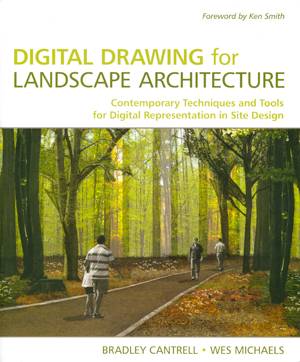
Digital Drawing for Landscape Architecture
Digital Drawing for Landscape Architects bridges the gap between the traditional analog and the new digital tools and shows you how to apply timeless concepts of representation to enhance your design work in digital media. Building on the tried-and-true principles of analog representation, Digital Drawing for Landscape Architecture explores specific techniques for creating landscape design digitally. It explains the similarities and differences between analog and digital rendering, and then walks you through the steps of creating digitally rendered plans, perspectives, and diagrams. You’ll explore: Computing Basics Raster and vector images Setting up the document Base imagery and scaling Hand-drawn linework and diagrams Text, leaders, and page layout Color, shading, and textures Creating a section elevation Perspective drawing Techniques for using the newest versions of Adobe Illustrator, Photoshop, and Acrobat as well as older versions With more than 500 full-color drawings and photographs alongside proven techniques, Digital Drawing for Landscape Architects will help you enhance your skills though a unique marriage of contemporary methods with traditional rendering techniques.
Get it Here! We hope you benefited from this list, there is certainly broad diversity of topics touched on relating directly to and indirectly to the extraordinary field of landscape architecture, helping you to discover just exactly where you want to specialize and develop your skill set in.
Watch out for the next edition of Joe’s recommendations for 3rd year. Article written by Joe Clancy
HOME PAGE Featured image nathanmac87 via Flickr CC 2.0
Published in Blog In the twenty-five years since it first took the academic world by storm, Design With Nature has done much to redefine the fields of landscape architecture, urban and regional planning, and ecological design. It has also left a permanent mark on the ongoing discussion of mankind’s place in nature and nature’s place in mankind within the physical sciences and humanities. Described by one enthusiastic reviewer as a “user’s manual for our world,” Design With Nature offers a practical blueprint for a new, healthier relationship between the built environment and nature. Get it Here! 9. Death and Life of Great American Cities (Jane Jacobs) A direct and fundamentally optimistic indictment of the short-sightedness and intellectual arrogance that has characterized much of urban planning in this century, “The Death and Life of Great American Cities” has, since its first publication in 1961, become the standard against which all endeavors in that field are measured. In prose of outstanding immediacy, Jane Jacobs writes about what makes streets safe or unsafe; about what constitutes a neighborhood, and what function it serves within the larger organism of the city; about why some neighborhoods remain impoverished while others regenerate themselves. Get it Here! 8. Life Between Buildings (Jan Gehl)
In the twenty-five years since it first took the academic world by storm, Design With Nature has done much to redefine the fields of landscape architecture, urban and regional planning, and ecological design. It has also left a permanent mark on the ongoing discussion of mankind’s place in nature and nature’s place in mankind within the physical sciences and humanities. Described by one enthusiastic reviewer as a “user’s manual for our world,” Design With Nature offers a practical blueprint for a new, healthier relationship between the built environment and nature. Get it Here! 9. Death and Life of Great American Cities (Jane Jacobs) A direct and fundamentally optimistic indictment of the short-sightedness and intellectual arrogance that has characterized much of urban planning in this century, “The Death and Life of Great American Cities” has, since its first publication in 1961, become the standard against which all endeavors in that field are measured. In prose of outstanding immediacy, Jane Jacobs writes about what makes streets safe or unsafe; about what constitutes a neighborhood, and what function it serves within the larger organism of the city; about why some neighborhoods remain impoverished while others regenerate themselves. Get it Here! 8. Life Between Buildings (Jan Gehl) 









